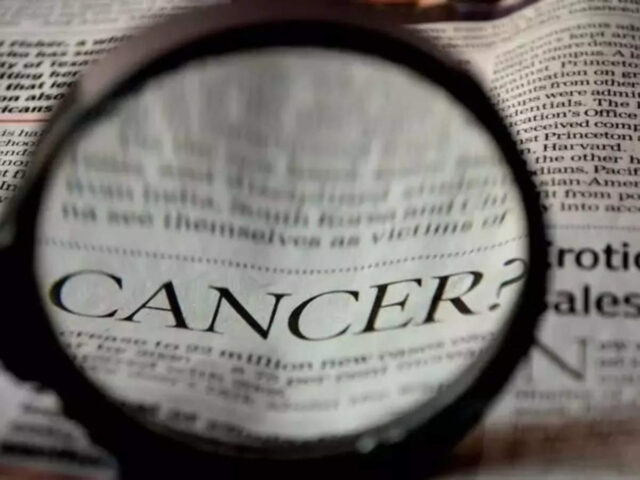
The study, which is the fourth edition of its flagship Health of Nation Report, highlighted the fastest rise in cancer cases and also the average age of incidence has also gotten significantly younger in India.
The report is based on 1.3 million health checks done at Apollo Hospitals network, 56,000 followed over 5 years on artificial intelligence based risk scores to predict cardiovascular events (AICVD) by Apollo Clinical AI Team.
Most common cancers in order of occurrence in India are breast, cervix and ovary in women and lung, mouth and prostate in men.
According to Apollo findings, the average age of diagnosis of breast cancer in India is 52, while it is 63 in US and Europe and . For lung cancer, the average age of diagnosis in Apollo is 59 years, whereas it averages to around 70 years in the west.
At Apollo, 30% of colon cancer patients are aged less than 50 years.Despite these trends, cancer screening rates in India remain very low. Breast cancer screening in India is 1.9% against 82% in US, 70% in UK and 23% in China. Cervical Cancer screening in India is 0.9%, against 73% in US, 70% in Uk and 43% in China.Breast, cervical and lung cancers can be detected at early stages through screening.
Apollo said through an analysis of about 90,000 values its hospitals found that the threshold for PSA (Prostate-Specific Antigen) in Indian males is different from the current standards, which is based on Caucasian populations.
The threshold value is lower for younger age groups and, with age, this value increases. This suggests that there is a need to create new guidelines for what is considered normal PSA levels for Indian men, to improve how doctors make decisions about prostate health.
The report also found 1 in 3 Indians today are prediabetic; 2 in 3 pre-hypertensive; 1 in 10 depressed.
The report further predicts a potential surge in healthcare burdens due to conditions such as pre-diabetes, prehypertension, and mental health disorders manifesting at increasingly younger ages.
Highlighting the importance of regular health screenings, the report underscores their role in reducing blood pressure (BP) and body mass index (BMI) levels, thereby lowering the risk of cardiac-related ailments.
“Our findings demonstrate a significant need for immediate interventions to fight, prevent and reverse the growing epidemic of cancer, diabetes, hypertension and obesity among others,” said Preetha Reddy, vice chairperson, Apollo Hospitals.
“The need to educate the public and create individualized preventive healthcare solutions has never been greater. By prioritizing investments in health infrastructure, promoting preventive healthcare measures, and addressing health inequities,” Reddy added.
Apollo launches India’s first ProHealth Score to help people to understand their health, Apollo has launched India’s first digital health risk assessment called ‘ProHealth Score’. Designed to assist people in making informed decisions for themselves, the ProHealth score serves as an essential tool for assessing your health and well-being. This free risk score evaluates factors such as family history, lifestyle, and current symptoms, it generates a personalized numeric indicator of your health status.
Additionally, it provides simple corrective measures to guide you toward better health.
With India experiencing rapid economic and lifestyle changes, there is a surge in non-communicable diseases (NCDs) like cardiovascular diseases, diabetes, respiratory ailments, and cancer, which account for 63% of all deaths in the country. By 2030, these diseases are projected to cost India $3.55 trillion in lost economic output.




































